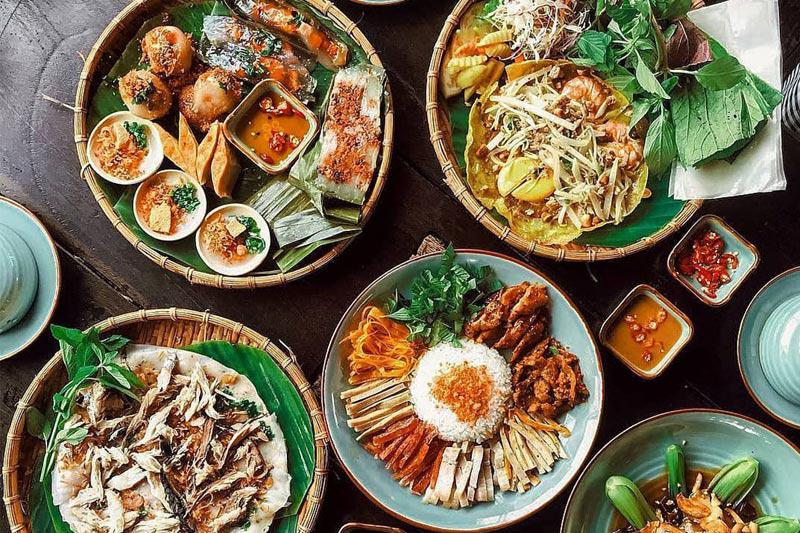
Food is not just sustenance; it’s a cultural experience waiting to be savored. In recent years, food tourism has emerged as a delectable trend, inviting travelers to embark on a gastronomic journey like never before. From savoring mouthwatering street food in Bangkok to sipping fine wine in the heart of Tuscany, food tourism offers a tantalizing trip around the world. In this article, we’ll explore the rich and diverse world of food tourism, uncovering the flavors, traditions, and hidden gems that await adventurous foodies.
Introduction
Food has always been an integral part of our travels, but in recent years, it has taken center stage. Food tourism, often referred to as culinary tourism, is a delightful way to explore a destination through its cuisine. It’s about more than just eating; it’s about immersing yourself in the culture, history, and traditions of a place through its food.
What is Food Tourism?
Food tourism is the art of traveling to destinations with the primary goal of experiencing the local food and culinary traditions. It’s a journey of flavors, where every meal becomes an adventure and every dish tells a story. Whether you’re sampling sushi in Tokyo or indulging in pasta in Rome, food tourism is a passport to the world’s culinary treasures.
The Global Food Map
Asia: A Culinary Paradise
Asia beckons with its diverse and vibrant culinary scene. From the bustling street markets of Bangkok, where you can savor Pad Thai and mango sticky rice, to the sushi temples of Japan, where artistry meets taste, Asian food offers an unparalleled gastronomic experience.
Europe: A Feast for the Senses
Europe, with its rich history and culinary diversity, is a food lover’s paradise. Explore the flavors of Spain with tapas and paella, or indulge in the decadence of French cuisine with croissants and escargot. Europe’s culinary tapestry is as diverse as its landscapes.
North America: From Sea to Table
North America offers a bounty of culinary delights, from the seafood of the Pacific Northwest to the barbecue pits of the American South. With its fusion of flavors and innovative chefs, North America is a destination that caters to all tastes.
The Culinary Traveler’s Toolkit
Before embarking on a food tour, it’s essential to equip yourself with the right tools for the journey.
Research and Planning
Start by researching the local cuisine, food festivals, and dining hotspots of your chosen destination. Planning ahead ensures you don’t miss out on any culinary gems.
Local Food Tours and Cooking Classes
Joining local food tours and cooking classes can provide invaluable insights into a region’s food culture. It’s a hands-on way to learn about traditional recipes and cooking techniques.
Food Festivals and Markets
Food festivals and markets are a foodie’s playground. They offer a chance to sample a variety of dishes, often prepared by passionate local artisans.
Tasting Traditions: Experiencing Local Cuisine
Street Food Adventures
Exploring a destination’s street food scene is an adventure in itself. From tacos in Mexico City to crepes in Paris, street food showcases the heart and soul of a place.
Fine Dining Exploration
For a more upscale experience, fine dining restaurants offer a chance to savor gourmet creations inspired by local ingredients. It’s an opportunity to taste the culinary artistry of a region.
The Cultural Significance of Food
Food is more than sustenance; it’s a cultural bridge that connects people. Sharing a meal with locals can lead to meaningful cultural exchanges and lasting memories.
Food as a Bridge
Food transcends language barriers and fosters connections. It’s a way to engage with locals and gain a deeper understanding of their way of life.
Preserving Culinary Heritage
Food tourism also plays a vital role in preserving culinary traditions. By supporting local food artisans and traditional restaurants, travelers contribute to the preservation of culinary heritage.
Sustainability and Food Tourism
As food tourism grows in popularity, so does the importance of responsible dining choices.
Farm-to-Table Movement
The farm-to-table movement emphasizes the use of locally sourced, sustainable ingredients. It’s a way to support local farmers and reduce the carbon footprint of your meals.
Responsible Dining Choices
Being mindful of the environmental impact of your dining choices, such as avoiding overfished seafood or restaurants that generate excessive food waste, is crucial in sustainable food tourism.
The Role of Technology
Technology has revolutionized the way we experience food tourism.
Food Apps and Recommendations
Mobile apps and online platforms provide recommendations, reviews, and even foodie itineraries, making it easier than ever to discover culinary gems.
Digital Storytelling
Blogs, vlogs, and social media platforms have turned food enthusiasts into digital storytellers, sharing their culinary adventures with the world.
Challenges and Opportunities
While food tourism offers a delectable adventure, it’s not without its challenges.
Overcoming Language Barriers
Language can be a barrier when navigating menus and communicating with locals. Learning a few key phrases can go a long way in enhancing your food travel experience.
Balancing Authenticity with Tourism
As destinations become more popular among food tourists, there’s a delicate balance to maintain between preserving authentic culinary traditions and catering to the tourist demand for familiar dishes.
Conclusion
Food tourism is an enriching journey that allows you to explore the world through your taste buds. It’s a celebration of culture, tradition, and the universal love for good food. So, pack your appetite and embark on a tantalizing trip around the world, one plate at a time.


